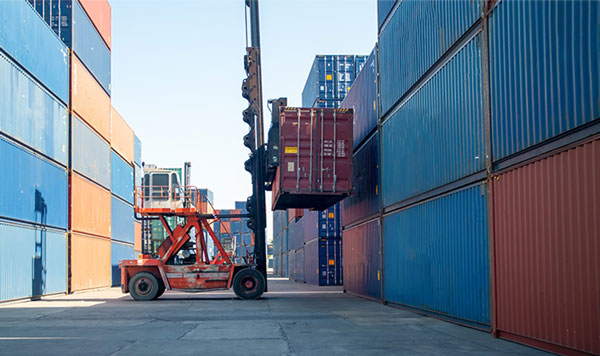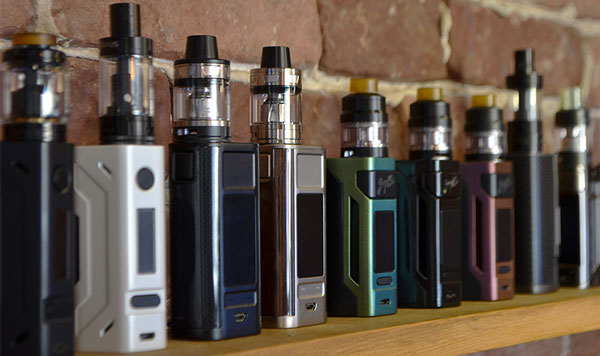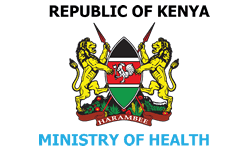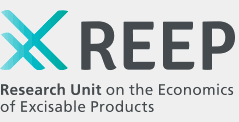
Tobacco Industry Interference
in Kenya
Tobacco industry interference in the development and implementation of tobacco control policies in Kenya has been increasing from 1990 to date.
The legal provisions to prevent industry interference that were adopted in Kenya in 2014 have not been comprehensively implemented and more should be done to ensure compliance.
Tobacco kills approximately 12,000 Kenyans per year and costs the economy KES 3 billion annually in healthcare expenditure and indirect costs associated with lost productivity due to early mortality and morbidity.
Historically, tobacco control efforts have been opposed by the tobacco industry.
The Preamble to the World Health Organization Framework Convention on Tobacco Control (WHO FCTC) recognises the need of Parties to monitor and counter any efforts by the tobacco industry to undermine or subvert tobacco control policies.This page provides information on the tactics used by the tobacco industry in Kenya to interfere with policy development and implementation, compares the level of interference in Kenya against that in other African countries, describes the tobacco industry players and those who represent their interests, demystifies common tobacco industry myths and provides recommendations on how to address industry interference.
Kenya is currently ranked 8th out of 80 countries participating in the Global Tobacco Industry Interference Index, with a score of 39.
Tobacco Industry Interference (T.I.I.) Index
The lower the score, the lower the level of interference
- T.I.I Score|
- 0 - 9
- 10 - 19
- 20 - 29
- 30 - 39
- 40 - 49
- 50 - 59
- 60 - 69
- 70 - 79
- 80 - 89
- 90 - 100
- No Data
Source: globaltobaccoindex.org
The Global Tobacco Industry Interference Index measures how governments are implementing Article 5.3 of the WHO FCTC and its Implementation Guidelines, based on civil society responses to a questionnaire using information from publicly available sources.
The lower the score, the lower the level of interference. When compared to other countries in the African region, Kenya’s ranking demonstrates progress in addressing tobacco industry interference following adoption of the Tobacco Control Regulations of 2014 and active civil society campaigns to monitor and counter industry interference. These regulations contain provisions to prevent tobacco industry interference.Data from the Global Tobacco Industry Interference survey covering 2019, 2020 and 2021, suggest that tobacco industry interference in Kenya increased between 2019 and 2020.
In 2019, Kenya was ranked 4th, with a score of 33, whereas in 2020 Kenya was 9th with a score of 40. This can be attributed to the tobacco industry taking advantage of the COVID-19 pandemic to bolster their public image and secure a favorable business environment for their products. When the COVID-19 Emergency Response Fund was established by President H. E. Uhuru Kenyatta in 2021, British American Tobacco Kenya (BATK) Ltd made a donation of Kes.10.6m (US $100,000). Soon after, the Kenyan government declared tobacco an essential product during the COVID-19 pandemic. This is despite the Kenyan Tobacco Control Regulations 2014 which prohibit public officials from forming partnerships with and/or participating in the activities of the tobacco industry, including activities labeled as Corporate Social Responsibility.The tobacco industry uses various tactics to oppose, delay, and disrupt the adoption and implementation of tobacco control policies.
One such tactic is the use of front groups. However, because the use of front groups is extensive, we have discussed it at length in the next section. The infographic below outlines how some tactics have been used in Kenya:Tobacco Industry Interference Tactics
Interference in policy
Interference in policy development and implementation
Interference in policy development and implementation has led to watered down legislative provisions.

In 2015 the Kenya Revenue Authority (KRA) adopted a flat-rate tax system on cigarettes of KES 2.50 per cigarette which contributed to a 17% decrease in tobacco consumption. Mastermind Tobacco Kenya Ltd lobbied against this measure through media advertisements that claimed that the flat rate benefitted their main competitor, British American Tobacco. Consequently, in 2017, the National Treasury Cabinet Secretary ordered the KRA to revert to the old tiered excise tax system.
CSR
Use of Corporate Social Responsibility CSR
The tobacco industry uses CSR to portray itself positively and market its products and brands.

In 2010, after tobacco farmers began to diversify from tobacco farming, British American Tobacco Kenya (BATK) launched an insurance scheme for tobacco farmers in partnership with UAP Insurance Kenya and Chancery Wright.
Years later, in 2017, UAP paid out Kes 79.5m to tobacco farmers. This acts as an incentive to farmers to continue growing tobacco by giving the impression that the insurance company would pay them if things should go wrong.Discrediting proven science
Discrediting proven science
The tobacco industry has attempted to dilute anti-tobacco public health messaging through sponsoring research that understates the health impact of tobacco use.

British American Tobacco Kenya (BATK) funded a research project titled “Epidemiological study into the relationship between smoking and heart disease” by Professor K. Ojiambo, who at the time was serving as the head of the Cardiology Department at the School of Medicine in the University of Nairobi.
Their motivation for the project was to develop a friendly association with one of Kenya’s leading medical specialists, gain access to medical thinking at the highest level, be seen to be conducting their business in a highly responsible way, and use the research results to counter some of the wilder allegations about tobacco-related disease epidemics in developing countries.
Receiving benefits or incentives
Receiving benefits or incentives
The tobacco industry seeks incentives from the government to create a favourable business environment for itself.

LYFT, a new smokeless oral tobacco product by British American Tobacco Kenya (BATK), was introduced to the market in 2019.
The tobacco industry applied for and secured initial registration for LYFT, under the Pharmacy and Poisons Act, as a pharmaceutical drug, thereby shielding LYFT from stricter regulation in Kenya as a tobacco product under the Tobacco Control Act.The Cabinet Secretary for Health has since revoked this registration and LYFT is now subject to similar tobacco control measures as other tobacco products.
Unnecessary interactions
Unnecessary interactions with the tobacco industry
The tobacco industry seeks opportunities to be seen in public with prominent government officials so that it can be portrayed in a positive light.

In 2019, during the Kenya Exporter of the Year Awards (which is a project of a state agency, the Kenya Export Promotion Council), the then Deputy President of Kenya, Dr. William Ruto, together with the Cabinet Secretary for the Ministry of Industry, Trade, and Cooperatives, the Hon. Peter Munya, attended the Gala Dinner where BAT won the Solid Rock Commendation (Lifetime Achievement) award.
Lobbying
Lobbying
The tobacco industry makes financial contributions to political parties, political candidates and government officials to influence tobacco control policy decisions.

In an attempt to influence the choice of a track and trace system intended to control illicit trade (in favour of Codentify), British American Tobacco Kenya (BATK) made payments amounting to USD 28,749 to sources within the Kenya Revenue Authority and USD 38,645 to former Kenyan Justice Minister Martha Karua, who was running a presidential campaign at the time in exchange for intelligence.
Conflicts of interest
Conflicts of interest / revolving door
Conflicts of interest are created by appointing people who serve or have served in the tobacco industry or have represented its interests in strategic positions in government. This gives the TI access to policy makers.

Betty Maina, former Chief Executive Officer of the Kenya Association of Manufacturers (recently served as the Cabinet Secretary in the Ministry of Industrialisation, Trade and Enterprise which declared tobacco as an essential product during the COVID-19 pandemic, despite the relationship between tobacco use and severe COVID-19 outcomes.
The tobacco industry in Kenya uses front groups to oppose tobacco control legislation, sway opinions on the health impact of tobacco use, and argue the impact of tobacco regulation on business, trade, investment, and farmer welfare.
Because of the proven harmful nature of its product, and its vested commercial interest in the outcomes of any policies affecting its product, the tobacco industry has lost credibility with the public and policymakers. It therefore uses seemingly independent and “credible” third parties to communicate its pro-tobacco and anti-tobacco-control arguments.
Ref 12
Ref 21 Ref 18 Ref 22As the harms from traditional tobacco products have become better understood, and amidst increasing regulation and shrinking markets, the tobacco industry has pivoted by developing and marketing novel tobacco and nicotine products.
WHO defines a novel tobacco product as a tobacco product that employs new or unconventional technology (such as vaporization of tobacco into the lungs), or a product that has been on the market in a country for a limited period of time or is newly introduced in a given country, and/or a product which has been or could be marketed with claims of reduced risk.
According to the European Union Tobacco Products Directive 2014, a novel tobacco product is a tobacco product that cannot be put in the same category as any of the following products: cigarettes, roll-your-own tobacco, pipe tobacco, waterpipe tobacco, cigars, cigarillos, chewing tobacco, nasal tobacco, or tobacco for oral use. Novel nicotine and tobacco products include electronic cigarettes (e-cigarettes), also known as electronic nicotine delivery systems (ENDS), electronic non-nicotine delivery systems (ENNDS), heated tobacco products (HTPs), dissolvable tobacco products (DTPs), and nicotine pouches.In September 2020, British American Tobacco Kenya (BATK) lobbied the KRA to exempt nicotine pouches from tax for 3 years and, after the 3-year period, to have them taxed at a lower rate than normal cigarettes. BATK claimed this exemption was reasonable “due to the size of foreign direct investment” and referred to BATK establishing exports of the product.
In 2021, BATK opposed a Ministry of Health directive to classify and regulate nicotine pouches as tobacco products under the Tobacco Control Act, arguing there should be a new tax bracket for these products. In the proposed budget for the financial year 2022/2023, BAT opposed proposals to increase excise duty on e-cigarettes and other nicotine delivery devices, stating that these are new products yet to be established in the market and their factory is yet to be fully authorized. They also argued that the proposed taxes are prohibitive and will continue to prevent establishment of a legal market for the products. This is despite the fact that these products have been in the market for over two years. These arguments were rejected and the government’s proposals adopted through the Finance Act 2022.Kenyan cigarette producers produced 18.35 billion cigarettes in 2019.
Kenya serves as a regional hub for manufacturing tobacco products, exporting to 17 other countries in the region.Kenya Tobacco Industry Market Share, 2011-2020
Source: Euromonitor
British American Tobacco Kenya (BATK) is the primary actor in tobacco manufacturing and distribution in Kenya, owning 71.5% of the market share, followed by Mastermind Tobacco Kenya (MTK), which owns 15.9% of the market share.
However, MTK’s market share has decreased from over 20% to 16% between 2014 and 2019.
Myth: Increased tobacco taxes will lead to increased illicit trade.
Fact: The impact of tax increases on illicit trade is minimal if there is any impact at all.

Myth: Tobacco is a major contributor to Kenya’s economy in terms of employment, tax revenue and Gross Domestic Product.
Fact: A decline in economic activity from tobacco will not entail a sizeable decline in Kenya’s economy.

Myth: Tobacco control laws are unconstitutional or infringe international trade and investment agreements.
Fact: Many courts have ruled that tobacco control laws are not unconstitutional because the WHO FCTC demonstrates international consensus on the harms of tobacco use and provides a legal basis for the tobacco control policy being challenged.
The Guidelines for the Implementation of Art 5.3 of the WHO FCTC
provide some recommendations for how countries can comprehensively and effectively protect their tobacco control policies from Tobacco Industry interference.The 2019, 2020 and 2021 Kenyan Tobacco Industry interference reports also make recommendations on what sections of the Tobacco Control Regulations 2014 (TCR 2014) on preventing Tobacco Industry interference have not yet been implemented, and how protection of Kenya’s tobacco control policies from industry interference can be strengthened. These include:
Ref 3
45




